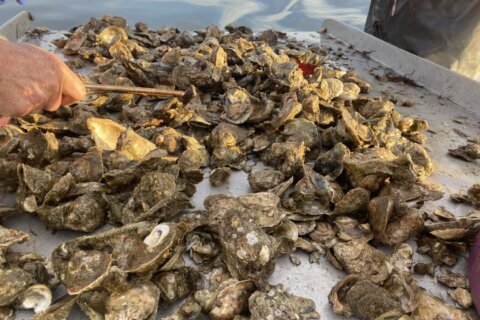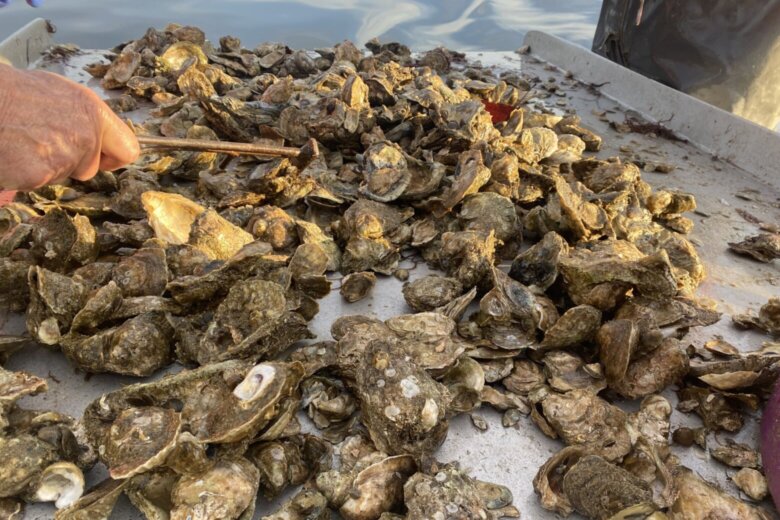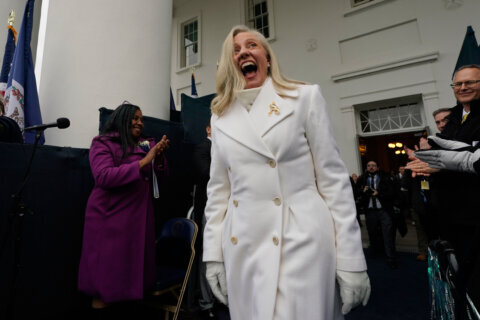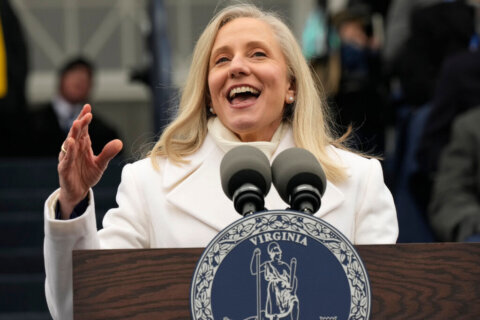
Improving the water quality of the Chesapeake Bay is often tied to efforts to boost the population of crabs, oysters and other native species that also help the region’s seafood industry stay afloat.
More oysters and crabs in the water mean more can be harvested by watermen and the seafood houses up and down the bay.
But one new oyster reef being installed by a Virginia company will be full of mollusks that aren’t necessarily destined for your dinner plate.
Acre Investment Management is targeting some of the most polluted parts of the Chesapeake Bay’s tributaries — with no intention of seeing those shellfish ever get harvested, since they’re going in waters that could end up making you sick if you ate too many.
Here, their primary focus is using marine bivalves to filter that water.
ACRE Investment Management is planting about 6 million new oysters in Urbanna Creek, Virginia, which is about 60 miles east of Richmond and not far from where the Rappahannock River empties out into the Chesapeake Bay.
“We put in too much nitrogen and phosphorus into our river systems that made it to the bay, and therefore caused problems,” said Chandler Van Voorhis, co-founder of ACRE. “And then we stripped out too many oysters for consumption side, which were the filter feeders.”
What will it take
Once upon a time, there were enough oysters in the Chesapeake Bay that the water could be totally filtered in three to four days. Now, it takes about 400 days.
The goal is to eventually restore 100,000 acres of the bay and capture 10 million tons of carbon.
“There are tremendous amounts of contaminated areas where oyster harvesting is prohibited because the water quality is so poor. … The government doesn’t want you to harvest oysters for safety reasons,” Van Voorhis said. “So those are very natural, easy areas for us to go in and say, ‘OK, let’s go fix that situation.’”
ACRE also manages the world’s largest reforestation project, planting trees around the Commonwealth and quantifying the amount of carbon captured.
“Up until the carbon market started coming around in the mid ’90s … the only time, for example, a tree showed up on a balance sheet is when a chainsaw hit it when it was being turned into a product,” Van Voorhis said. “Same thing with oysters. The only time an oyster reef has had any value is through the consumption of that oyster reef.”
While they anticipate some of those oysters will be harvested over time — they can’t exactly police those beds 24/7 — that’s not the benefit of the creation of these new oyster beds.
“That good is providing clean water and clean air,” Van Voorhis said. “What we’re trying to do is put a lot more oysters back (and) use a different approach to the financing so that we’re able to help other efforts and parallel efforts to clean up the Chesapeake Bay.”
Get breaking news and daily headlines delivered to your email inbox by signing up here.
© 2024 WTOP. All Rights Reserved. This website is not intended for users located within the European Economic Area.









